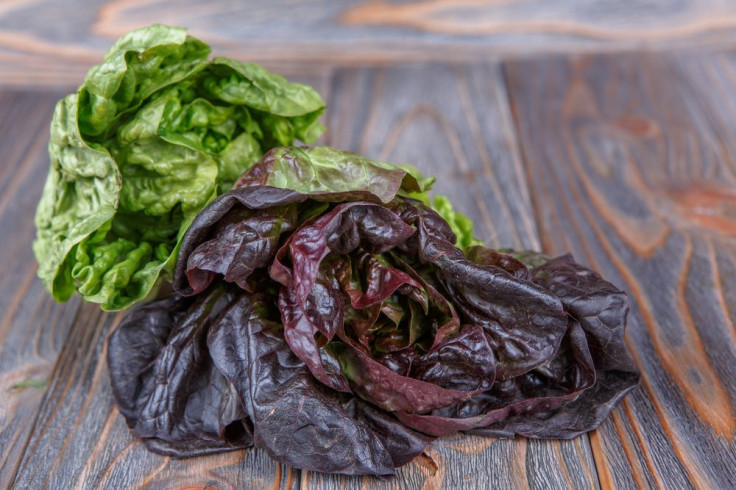The Antioxidant Effect: Color Of Lettuce Decides How Fast Antioxidants Act

If you spend the majority of your time in the produce aisle deciding between romaine and iceberg lettuce, you may want to refocus your decision on the color of your lettuce. A recent study conducted by Electron Paramagnetic Resonance (EPR) Kinetics has revealed that the color of your lettuce, whether it be green, semi-red, or red, could determine how fast its antioxidants act.
“The fact that there are compounds that act at different speeds does not mean that some are better or worse than others,” Dr. Usue Pérez-López, from the Department of Plant Biology and Ecology of the UPV/EHU's Faculty of Science and Technology, said in a statement. “If we eat foods that can generate free-radical activity, there will be some compounds that act to eliminate them more quickly.”
Pérez-López and his colleagues used Electron Paramagnetic Resonance (EPR) techniques to analyze the compounds found in three varieties of lettuce: the green-leaf “Batavia,” the semi-red-leaf “Marvel of Four Seasons,” and the red-leaf “Oak Leaf.” Lettuce is loaded with antioxidants that protect against cell damage and various disease caused by free radical processes. Active compounds found in lettuce include phenolic acids, flavonoids, anthocyanins, and vitamins A and C.
Findings showed that green-leaf lettuce contains water-soluble, antioxidant compounds that act at a slow to intermediate speed. Semi-red-leaf is home to three kinds of compounds that act at a rapid, intermediate, and slow speed. Lastly, red-leaf lettuce has compounds that act at an intermediate and rapid speed.
“It is also important that our bodies should acquire foods with antioxidants that have slower kinetics so that the latter will continue to act over a longer period of time,” Pérez-López explained. “That is why people say that it is very interesting to mix different types of lettuce because they have different, complementary characteristics.”
The research team plans on using the results of this study to enhance the health benefits of all three varieties of lettuce. They aim to expose each variety of lettuce to abnormal conditions, such as watering them with saline water, subjecting them to high lighting intensity, or working with raised concentrations of CO2. Exposing lettuce to these conditions activates its defense functions which, in turn, boosts the antioxidant qualities of the plants.
“What matters in this process is not to lose productivity, and that is why we apply short-intensity stresses,” Pérez-López added. “With excessive stress, we could reach a point in which plant growth is reduced, and we are not interested in achieving greater quality at the cost of a reduction in size. The aim is to maintain production and achieve greater quality in this production.”
Source: Sgherri C, Ranieri A, Quartacci M, Pinizino C, Pérez-López U. Phenolic Composition and Related Antioxidant Properties in Differently Colored Lettuces: A Study by Electron Paramagnetic Resonance (EPR) Kinetics. Journal of Agricultural and Food Chemistry. 2015.
Published by Medicaldaily.com



























